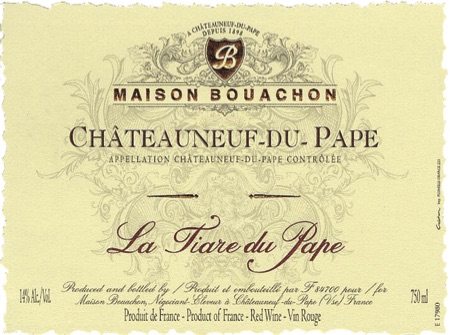
France has set the standard for some of the finest wines and wine types of the world. This is in part due to the phylloxera root louse that decimated French vineyards in the late 1800s. When mass replanting on resistant rootstocks was undertaken, the most appropriate grape or grapes were selected for planting in each region.
This is perhaps the best way to learn about French wines: by knowing the grapes used in each region for the prime wine types and styles.
France organizes its wines by a system known as “appellation contrôllée” or “place/name control.” This means that the wine in the bottle matches the label and region of origin. It also implies a certain level of quality, though there are widely divergent levels of quality within any region and appellation. It pays to know both the potential quality of a region and particularly the specific producer, as they are the final determination of quality.
Appellation contrôllée also encompasses delimiting the boundary of a specific region (climate and soil types but sometimes political regions), the minimum alcohol level (indicates grape ripeness), methods of pruning and training the grape vines, yield (establishes concentration levels) and winemaking methods.
The Chateauneuf-du-Pape region in the southern Rhône was the first to establish such standards, whose purpose was to ensure authenticity and prevent fraudulent producers from diminishing the region’s quality reputation. Another fraud-prevention measure is for an estate to bottle its own wine.
The cool climate in many French regions results in wines that are reserved in style and have firm acidity. Many of these wines develop and open in the glass and show better with time. They are not showy or flagrant in style, but take time to show their character and subtlety. If we take the time to get to know them, their quality usually becomes obvious.
Here are some of the major regions and grapes to know:
Loire River Valley (West): Muscadet – Low acid, vinous whites from the Melon de Bourgogne grape, the best bottled directly off their lees for freshness, showing a delicate hint of spritz.
Loire River Valley (Central): Vouvray, Anjou – Fruity, aromatic whites with firm acidity made from Chenin Blanc, the styles range from sparkling, softly dry to very long-lived, botrytised examples.
Within the Anjou region: Savennières – A unique appellation for dry, focused, stylish Chenin Blancs.
Loire River Valley (East): Sancerre, Pouilly Fumé – Crisp, herb-scented whites that are elegant and long, made from Sauvignon Blanc. The finest are usually produced without oak and have piquant, high acidity.
Champagne – Blended wines from Pinot Noir, Pinot Meunier (red) and Chardonnay (white) for classic bottle-fermented wines of great length, toasty nuances, firm acidity and creamy textures.
Burgundy – Whites from Chardonnay, reds from Pinot Noir. These are some of the finest wines in the world produced from these grapes and can be exceptionally long-lived and complex. Burgundy encompasses Chablis, Côte de Beaune, Côte Challonaise and Macon for whites, and all these regions except for Chablis for reds (there are also few Macon reds).
Bordeaux “Left Bank” – Red wines based primarily on Cabernet Sauvignon, Cabernet Franc and Merlot with inclusion of Carmenère, Petit Verdot and Malbec in the blend.
Bordeaux “Right Bank” – Red wines made from Merlot and Cabernet Franc. White wines from Sauvignon Blanc (imparting acidity and aroma) and Semillon (imparting weight and texture). Semillon is a focus for late harvest white wines because of its thin skins and botrytis susceptibility.
Beaujolais – Grapey, supple reds made overwhelmingly from the Gamay grape, with good acidity and purple hues. Casual wines for quaffing, though serious producers and communes do make substantial wines.
Northern Rhône – Syrah-based reds, with big, gamey, blackberry scents and flavors. Viognier makes perfumed whites; other white grapes are Marsanne and Roussanne. White grapes are blended in small portions in some red wines to offer freshness and aroma.
Southern Rhône – Reds are blended from up to 13 varietals (including some whites) to reach complexity in the warmer climate, but Grenache is the focus, blended with Syrah, Mourvèdre, Carignan and Cinsault. Whites from Marsanne and Roussanne.
Languedoc/Roussillon – Many blended, quality wines from Carignan, Grenache, Syrah, Mourvèdre and Cinsault. Also Cremant (sparklers) from high-altitude Limoux.
Provence – Known for rosé but also making reds from Rhône varietals.
Alsace – Dry whites named for the varietal (Pinot Gris, Gewurztraminer, Pinot Blanc, Auxerrois, Riesling). Also light reds from Pinot Noir.

